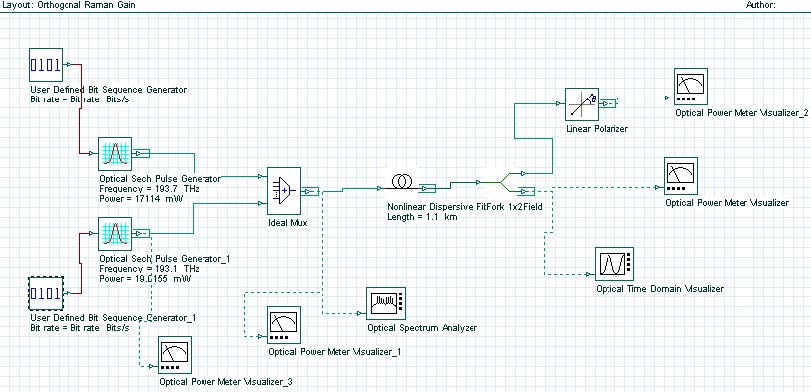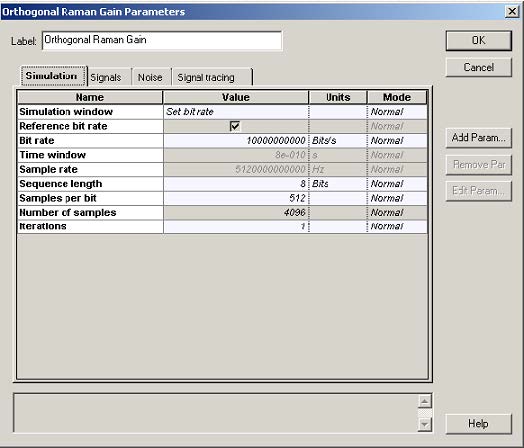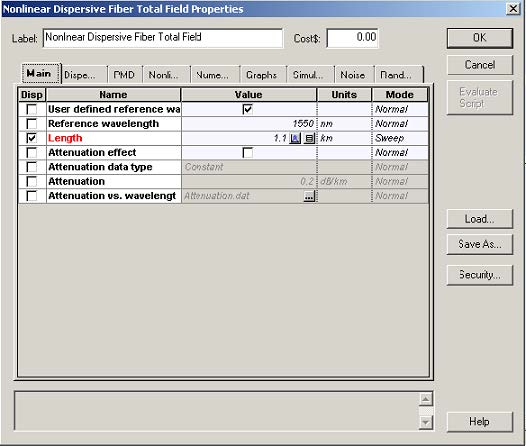This lesson demonstrates the energy exchange between two optical solitons with orthogonal polarizations associated with the orthogonal Raman gain [1].
Using equations (17a) from the technical description of the Nonlinear dispersive fiber component it can be shown [1] that the energy exchange between two solitons:

where P1 > > P2 and Δ ω > 0 is approximately given by the following expression [1]:

Equation 2 denotes the energy of the weaker (low frequency) soliton.
The layout and its global parameters are shown in Figure 1.
Figure 1: System layout and global parameters
Figure 2 gives the setup for the nonlinear dispersive fiber component.
Figure 2: Setup parameters
Figure 3 gives the comparison between the analytical result of Equation 2 and the results obtained with OptiSystem.
Figure 3: Experimental and OptiSystem results
References:
[1]C. R. Menyuk, M. N. Islam and J. P. Gordon, Optics Letters 16 p.566 (1991).





